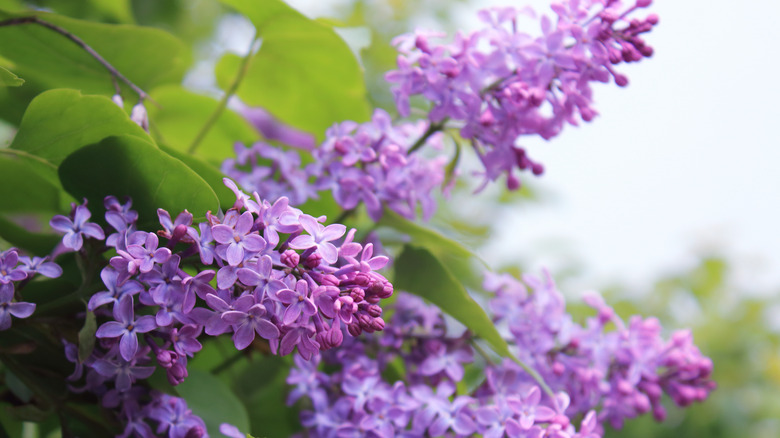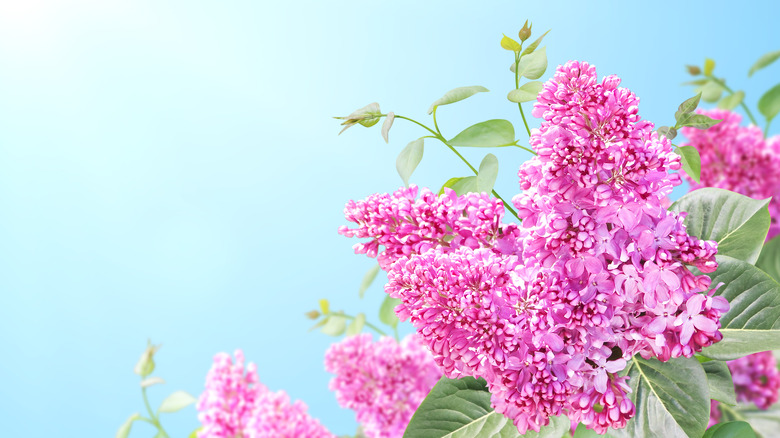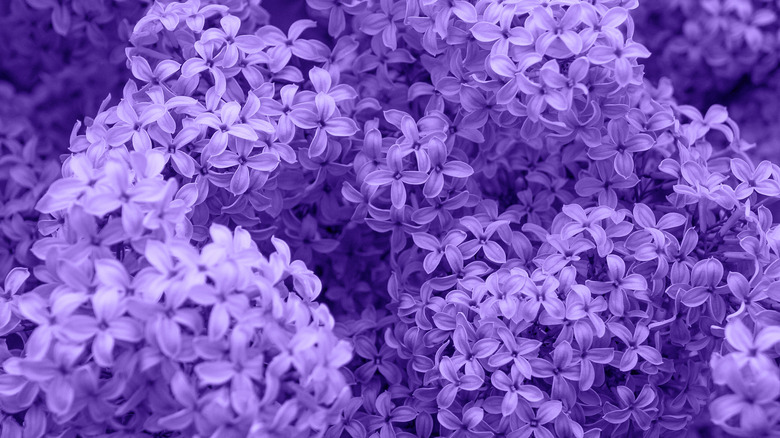The Real Meaning Of A Lilac Tattoo
Flowers have long been a popular design choice for tattoos. The versatility of flowers allows for various meanings to be conveyed through their use in body art, like signifying where you're from (via Custom Tattoo Design), celebrating the lives of those closest to you, or representing the mythology or historical significance of particular flora. While roses, peonies, lotuses, and sunflowers are the most popular flowers tattoos, according to Flower Card, there has been a rise in the number of those opting to have lilac inked on their body.
Described by The Spruce as an "exceptionally hard, easy to grow, and long-lived" plant, the lilac flower blooms in a variety of species, including the Andenken An Louis Spaeth, Sensation, Wedgewood Blue, and Charles Joly. Across the lilac species, you'll most commonly come across pale and deep purples, pinks, whites, and the occasional blue.
The delicate lilac often lends itself to being the perfect choice for small, minimalist tattoos (via Tattoo Blend) that focus on the beauty that flowers can bring.
Different shades of lilac carry a variety of meanings
As one of the earliest flowers to bloom in spring (via Almanac), lilacs are often seen as a "symbol of fresh starts" and "renewal," according to Florgeous. As such, lilacs tattoos can mark new beginnings and other important milestones in your life. It can also represent the season itself, one of the most beautiful times of the year. Even better, if you or someone close to you were born during spring, a lilac tattoo can be a unique way of celebrating such an occasion. Lilac happens to be the state flower of New Hampshire, too (via State Symbols USA).
In terms of what different colored lilacs can represent, they can denote "feminine feelings such as love, beauty, tenderness, and compassion," according to TattMag. Pink lilacs can symbolize "unrelenting love and passion," whereas purple lilacs can "represent nobility, royalty, and even ambition." This shade can also represent heartbreak, as the feeling "can often appear as purple in the heart chakra," as aura reader Rachelle Terry told MindBodyGreen.
Lilacs were believed to have magic powers in certain cultures
For the more spiritually inclined, lilac does carry significant meaning within certain cultures. For example, in Greek mythology, the nymph Syringa turned herself into a lilac shrub to hide from Pan, the god of forests and fields, who was deeply in love with her. Despite not being able to find her, he did happen to stumble across the lilac shrub and took one of the reeds to create a panpipe, per Better Homes & Gardens. The nymph's name just so happens to be the Greek word for pipe, which served as a basis of the botanical name for lilac.
In other cultures, lilacs are associated with love and magic. According to Florgeous, the Celts believed it had "magical powers due to its overwhelming fragrance" and were often used to get rid of "negative energies" and for protection, per Learn Religions. In Victorian England, lilacs were thought of less as having magical powers and instead used as a token of affection for "an old, often bygone love."


